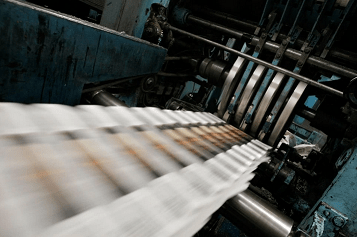Ads placed in news media consistently outperform ads on Facebook and YouTube, according to a study conducted by Australia’s ThinkNewsBrands.
The cross-platform analysis found that while ads in both print and digital news publications perform better than ads in the social media channels, print ads specifically had a much greater memory impact on readers.
The study included more than 5,350 participants who experienced ads from seven Australian brands in 11 forms of media.
For six days, 42 custom print runs were sent each morning across Sydney, Melbourne, and Perth.
To cut down on bias dependent on ad-placement, seven versions of each newspaper were also distributed each morning. Two hundred and fifty-two websites were also created, with more than 6,000 unique brand exposures.
To maintain the same creative assets for all platforms, the study provided three different print sizes — full-page, half-page, and quarter-page ads — and 6-second, 15-second and 30-second ads for digital display and video.
Duane Varan, CEO of MediaScience, who oversaw the study, describes it as “a monumental effort” that is intended to assure advertisers that it was a true “apples to apples comparison.”
Results show that newspaper ads, regardless of ad type, outperformed Facebook up to four times.
On mobile and desktop, ads in news outlets delivered 1.7 times the unprompted recall of 6-second YouTube ads and were equal to 15-second YouTube ads.
News outlets also proved most effective for short-term ROI, with 10% stronger sales growth than social media.
“The thing about news is that it’s cognitively engaging,” Varan explains, adding: “When you watch the news, you’re thinking about what’s going on. You go into the ad break with your brain wired and fired up, and so you have better access to your memory pathways as a consequence.”
According to Varan, ad recall in news outlets was consistent across three stages of memory:
1. Attention (seeing and absorbing content) was measured by brand recognition.
2. Message-processing was measured by queue recall.
3. Memory retrieval was measured by unaided/free recall.
“It’s telling the story, again, around this clear superior memory effect for news,” Varan says. “It’s consistent with what we’ve seen across many other studies that we’ve done for news clients.”
Varan believes there is too much “assumption” in the market and that various media ad-effectiveness propositions “need to be weighed.”
“We can’t just make assumptions about what effects we think things deliver. We have to have some data that informs it.”
Out of all the study’s findings, Varan says he was most surprised by the comparison of print ads to Facebook ads.
“Just to see how much stronger newsprint was vis-a-vis a Facebook ad, you’re getting a much greater impact,” he says. “A print ad is even outperforming a video ad. That’s pretty telling.”
Varan thinks advertisers have forgotten how good print ads look.
“We just have not been around the medium enough to remember,” he said. “A print ad is very rich. Compare that to the fleeting experience of seeing an ad and scrolling through it.”
Overall, the study suggests how powerful context actually is.
The success of an ad may depend heavily simply on where an ad is placed, Varan says, noting: “Think about how hard it would be to get a 10% lift. Here we’re talking about much more dramatic effects.”
While the study is based on Australian consumers and media outlets, Varan believes that if the study was replicated overseas it would show similar results.
“The numbers might not be exactly the same, but the trend would be,” he says.



